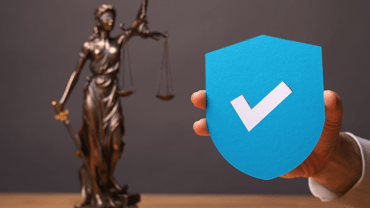 Briefing
Briefing
AB 2009 and AB 1766: New Automated External Defibrillator Requirements
In 2018, the California Legislature passed two laws which will require certain schools and other public facilities to obtain and install an automated external defibrillator (AED).
AB 2009 (Chapter 646, Statutes of 2018)
Effective Date: July 1, 2019
Agencies Affected: All K-12 school districts and charter schools that offer any interscholastic athletic program
Legal Requirements: Ensure there is a written emergency action plan in place that describes the location and procedures to be followed in the event of sudden cardiac arrest and other medical emergencies related to the athletic program’s activities or events. This plan must be posted in compliance with the guidelines promulgated by the National Federation of State High School Associations.
Acquire at least one AED for each school within the school district or charter. The law also “encourages” districts to ensure that the AED(s) are available for the purpose of rendering emergency care or treatment within 3-5 minutes of sudden cardiac arrest to pupils, spectators or others attending on-campus athletic activities or events. The law requires the district to ensure that the AED(s) are available to athletic trainers, coaches, and authorized persons at these activities or events.
Ensure that the AED(s) are maintained and regularly tested according to the operation and maintenance guidelines set forth by the manufacturer, the American Heart Association, or the American Red Cross, as well as the applicable rules and regulations of the federal Food and Drug Administration or any other applicable state or federal authority.
Liability Provisions:
School District Employees: Any person who, in good faith and not for compensation, renders emergency care or treatment by the use of an AED at the scene of an emergency is not liable for any civil damages resulting from any acts or omissions in rendering the emergency care, so long as they do not engage in gross negligence or willful or wanton conduct that results in injury or death. They are not immune from liability for a malicious failure to use an AED.
School Districts: They are immune from liability if they are compliant with Section 1797.196 of the Health and Safety Code, which requires every entity that acquires an AED to:
- Comply with all regulations governing the placement of an AED
- Notify an agent of the local EMS agency of the existence, location and type of AED acquired
- Ensure the AED is maintained and tested according to manufacturer’s instructions
- Ensure the AED is tested at least biannually and after each use
- Ensure that an inspection is made of all AEDs on the premises at least every 90 days for potential issues related to operability of the device
- Ensure that records of maintenance and testing are maintained.
Additionally, the principal of a school where the AED is placed must take the following steps under Section 1797.196:
- Ensure that school administrators and staff annually receive information that describes sudden cardiac arrest, the school’s emergency response plan, and the proper use of an AED
- Ensure that instructions, in no less than 14-point type, on how to use the AED are posted next to every AED
- At least annually notify school employees as to the location of all AED units on campus.
AB 1766 (Chapter 270, Statutes of 2018)
Effective Date: January 1, 2019
Agencies Affected: Every public swimming pool that is required to provide lifeguard services and that charges a direct fee (a separately standing fee or charge for the use of a public swimming pool to the exclusion of any other service, facility, or amenity).
Public swimming pools that do not charge a direct fee are not required to obtain an AED.
Legal Requirements: Provide on premises an AED unit that is readily available during pool operations.
Liability Provisions:
Public Agencies: They are immune from liability if they are compliant with Section 1797.196 of the Health and Safety Code, which requires every entity that acquires an AED to:
- Comply with all regulations governing the placement of an AED
- Notify an agent of the local EMS agency of the existence, location and type of AED acquired
- Ensure the AED is maintained and tested according to manufacturer’s instructions
- Ensure the AED is tested at least biannually and after each use
- Ensure that an inspection is made of all AEDs on the premises at least every 90 days for potential issues related to operability of the device
- Ensure that records of maintenance and testing are maintained.
- At least annually notify employees as to the location of all AED units on campus.
Volunteers: Any person who, in good faith and not for compensation, renders emergency care or treatment by the use of an AED at the scene of an emergency is not liable for any civil damages resulting from any acts or omissions in rendering the emergency care, so long as they do not engage in gross negligence or willful or wanton conduct that results in injury or death.
They are not immune from liability for a malicious failure to use an AED.
Additional Resources
The following offer further information on AEDs:
- California Emergency Medical Services Authorityhttps://emsa.ca.gov/aed/
- The American Red Cross (AED training classes)https://www.redcross.org/local/california/take-a-class/aed
Additionally, school districts can consult:
- National Federal of State High School Associationshttps://www.nfhs.org/media/865824/wk16-emergency-action-plan-koester-redman.pdf
- California Interscholastic Federationhttp://www.cifstate.org/sports-medicine/emergency_action_plan/index
- Sudden Cardiac Arrest Foundation (information on funding sources for schools to acquire an AED)https://www.sca-aware.org/schools/funding-sources
- California Department of Education—The state department of education is required by AB 1766 to work in consultation with the state department of public health to issue best practices guidelines related to pool safety at K-12 schools. Those guidelines have not been issued to date.
Please contact your Keenan Account Manager for questions regarding this Briefing.
AP Keenan is not a law firm and no opinion, suggestion, or recommendation of the firm or its employees shall constitute legal advice. Clients are advised to consult with their own attorney for a determination of their legal rights, responsibilities, and liabilities, including the interpretation of any statute or regulation, or its application to the clients’ business activities.
Subscribe
Subscribe to the Keenan Blog





